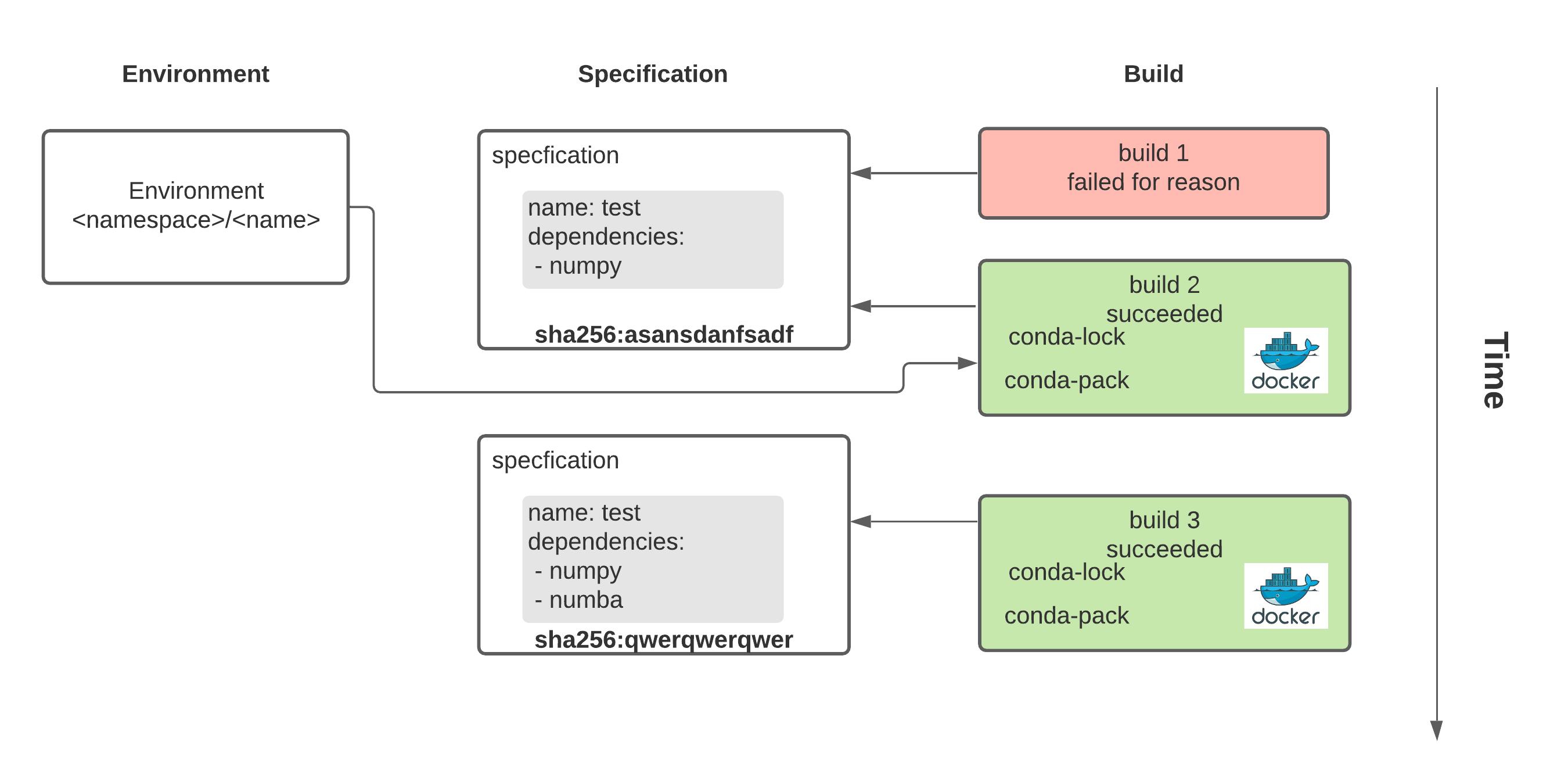Architecture
This page is in active development, some content may be inaccurate.
conda-store was designed with the idea of scalable enterprise management of reproducible Conda environments.

Configuration
Traitlets is used for
all configuration of conda-store. In the beginning command line
options were used but eventually we learned that there were too many
options for the user. Traitlets provides a python configuration file
that you can use to configure values of the applications. It is used
for both the server and worker. See
tests/assets/conda_store_config.py
for a full example.
Workers and server
conda-store can be broken into two components. The workers which have the following responsibilities:
- build Conda environments from Conda
environment.yamlspecifications - build Conda pack archives
- build Conda docker images
- remove Conda builds
- modify symlinks to point current environment to given build
- generally any tasks that can take an unbounded amount of time
All of the worker logic is in conda_store_server/build.py and
conda_store_server/worker/*.py. Celery is used for managing tasks so
you will see the celery tasks defined in
conda_store_server/worker/tasks.py which in turn usually call built
in CondaStore functions in conda_store_server/app.py or
conda_store_server/build.py.
The web server has several responsibilities:
- serve a UI for interacting with Conda environments
- serve a REST API for managing Conda environments
- serve a programmatic Docker registry for interesting docker-conda abilities
The web server is based on
FastAPI. Originally Flask was chosen
due to it being battle tested and that conda-store is not doing any
special things with the web server. However, over time the ability for
robust input and output guarantees from the endpoints along with auto
documentation made FastAPI appealing. The backend web app is defined
in conda_store_server._internal.server.app. There are several components to
the server:
- UI ::
conda_store_server/server/views/ui.py - REST API ::
conda_store_server/server/views/api.py - registry ::
conda_store_server/server/views/registry.py
Both the worker and server need a connection to a SQLAchemy compatible database, Redis, and S3 compatible object storage. The S3 server is used to store all build artifacts for example logs, docker layers, and the Conda-Pack tarball. The PostgreSQL database is used for storing all states on environments and builds along with powering the conda-store web server UI, REST API, and Docker registry. Redis is used for keeping track of task state and results along with enabling locks and realtime streaming of logs.
Terminology

conda_environment = f(open("environment.yaml"), datatime.utcnow())
- namespace :: a way of providing scopes between environments. This
prevents Joe's environment named
data-sciencefrom colliding from Alice's environment namedata-science. - environment :: a pointer to a current build of a given specification
- specification :: a Conda environment.yaml file
- build :: a attempt of
conda env install -f environment.yamlat a given point in time
In order to understand why we have the complicated terminology for an environment it helps to understand how Conda builds a given environment.